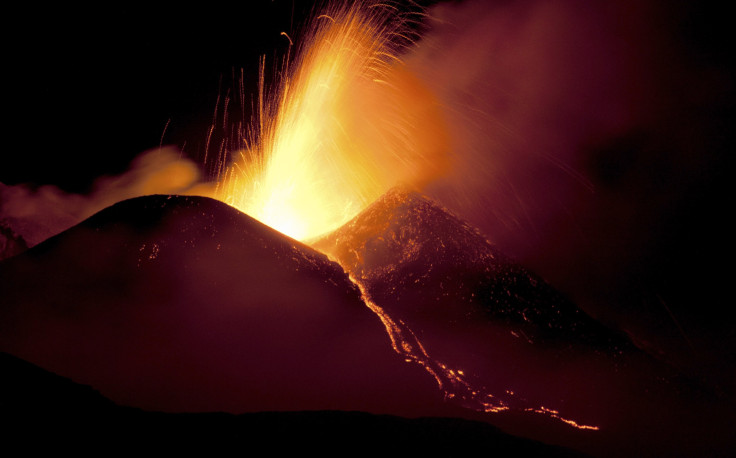Magma In Dormant Oregon Volcano Mount Hood Is ‘Like Peanut Butter In A Refrigerator’; Study Could Help Predict Future Eruptions

New research into how magma is stored below volcanoes suggests that much of the magma sits in a near-solid state for thousands of years and liquefies only just before an eruption. Researchers studying Oregon’s Mount Hood, an 11,200-foot volcano that last erupted 220 years ago and is now considered dormant, found that the time it takes for a volcano’s magma to liquefy and erupt is surprisingly short, maybe even as little as a few months.
According to the new study, published in the journal Nature, volcanoes actually store their magma in a much colder state than previously thought. Researchers believe that this information could help scientists to better predict eruptions by monitoring volcanoes for liquid magma.
"If the temperature of the rock is too cold, the magma is like peanut butter in a refrigerator," geologist Adam Kent, a co-author of the study, said in a statement. "It just isn't very mobile. For Mount Hood, the threshold seems to be about 750 degrees Celsius – if it warms up just 50 to 75 degrees above that, it greatly increases the viscosity of the magma and makes it easier to mobilize."
Kent and his team looked at the crystals present inside Mount Hood, which formed when the volcano’s magma first rose up through the Earth’s crust into its present-day chamber. Researchers determined the age of the crystals by measuring the rate of decay of naturally occurring radioactive elements within them.
Magma that was full of crystals was too slow-moving to erupt. Scientists believe it took hot magma rising up from the depths of the Earth to reheat the magma inside the chamber and cause an eruption.
"This tells us that the standard state of magma for this system is that it can't be erupted," Kari Cooper, a geochemist at the University of California, Davis, and co-author of the study, told Live Science. "That means that having a magma that can erupt is a special condition. Our expectation is that there's a lot of volcanoes that behave this way."
Scientists determined that Mount Hood’s magma reservoir sits about 2.5 to 3 miles beneath the surface. According to the analysis of the volcano’s crystals, its temperature is usually 1,380 degrees Fahrenheit.
“Magma storage at low temperatures indicates that, although thermobarometry calculations based on mineral compositions may record the conditions of crystallization, they are unlikely to reflect the conditions of most of the time that the magma is stored,” the authors wrote.
Researchers say their technique of monitoring liquid lava isn’t a foolproof for predicting eruptions but should be considered against the backdrop of several other indicators, including seismic activity and gases.
"If you can see a body of magma that has a high amount of liquid, perhaps this magma is getting ready to erupt or at least has some potential to erupt," Kent said. "It wouldn't be a slam-dunk guarantee."
© Copyright IBTimes 2024. All rights reserved.






















